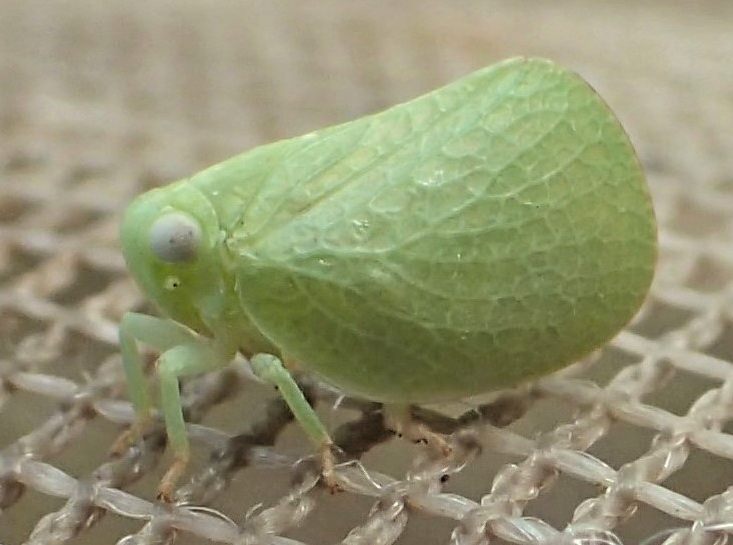Description: A very small member of this genus, tiny compared to the other Acanalonias. The vertex (head) gradually rounds from the eyes, and the costal margin of the wing is narrowly reflexed; the wings are heavily reticulared (UDEL). The 5th instar nymph of this species (which has been described) has a broad, nearly straight (or flat) head; the vertex is nearly twice as broad as long, and the face has an irregular row of sensory pits near each margin (FLEN). The eyes are large and prominent, with ocelli lacking. The nymph appears hump-backed, with sensory pits covering various parts of the whole body. Nymphs are pale cream to brownish in color, with a mottled appearance. The penultimate instars are strongly mottled and marked with light to dark brown. Nymphs are 3.9 mm long.
For more information on the nymphs, including some drawings, see: FLEN. For more images of this species, see: BG. |

 »
»



 »
»

